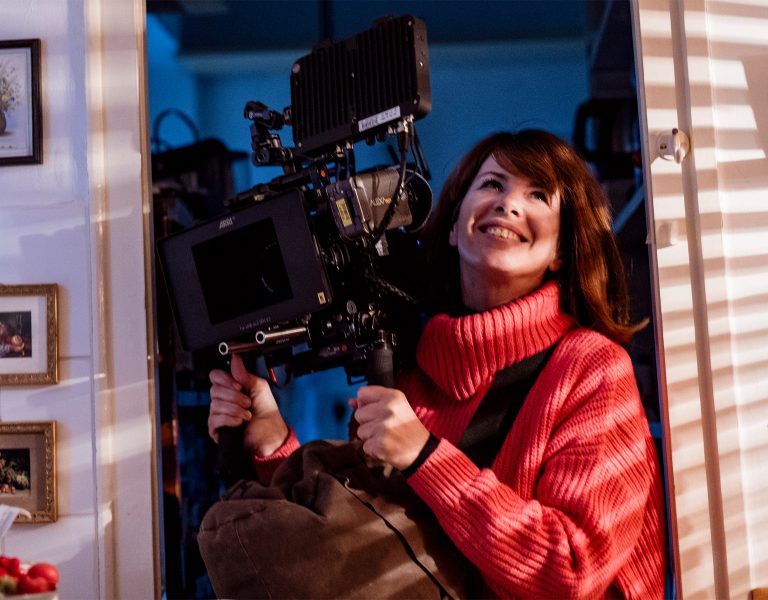Cinematographer Fernanda Tanaka ABC, chair of the IMAGO Film Preservation and Restoration Committee, introduces us to the federation’s latest group, dedicated to conserving cinematic history.
“Memory is consciousness inserted in time.” – Fernando Pessoa
Having celebrated the creation of the recently approved IMAGO Film Preservation and Restoration Committee during the last IAGA (IMAGO’s Annual General Assembly) in February 2024, I would like to take the opportunity to remind us of the importance of preserving our film* history.
Cinema is quite a young art, only a little older than a century, and yet, it has gone through so many drastic changes throughout the years – the “digital world” being one of the biggest so far. And if within the “analogue world” (nitrate/negative/positive etc.) we had to struggle to find better/more efficient ways to preserve and to restore our films, within the “digital world” we are still in an expensive and ongoing battle.
Analogue materials must be physically stored in adequate and controlled environmental conditions (relative humidity, light and temperature levels) to remain well preserved for decades. Digital materials, on the other hand, require much more: they need to be “migrated” on a regular basis to newer file formats and storage medias, since they, as we all know, have a very limited lifetime – not only do they suffer from a quick physical degradation, but also from a fast technological obsolescence.
These “migrations” are very expensive, so this process is not accessible to everyone. Some big studios have their own film vaults, others may find private vaults/companies to secure their films, TV shows, etc. But it is axiomatic that most independent filmmakers and institutions certainly don’t have enough budget for that.
When we fail to preserve a film, there is the option to restore it – only for those who can afford it, though. Film restoration is a delicate and costly process, and each case is totally unique. A very succinct description of such a process would be: depending on the material source (negative, positive, intermediate, videotape…) and how deteriorated it is, the workflow differs, and the restoration stage may take longer.
Whether the material needs manual intervention – and how complex it must be – is a huge concern as well. The types of scanner and the software used in the digitisation process (in case of analogue sources) are also crucial items to be considered. Although sometimes, in countries like Brazil, there are not many options available, only one.
Restoring a film also involves so many artistic decisions, as well as ethical ones. The participation of a DP is essential in this process. If the original DP of the film is not available – which is, undoubtedly, the first and best option – another DP must be integrated. In any case, he/she is the professional who will be able to work with the laboratory technician and the restorer evaluating the best source material and the best way to deal with it. This team will then decide what and how the material must be cleaned (e.g. scratches/dust/hair removal, reconstruction of missing parts of the image or frames, image stabilisation), and finally, what the film will look like (colour grading), always respecting its original characteristics. Otherwise, the outcome can be a completely different film, utterly unrelated to the primary one.
”Film heritage is the main concern of the Film Preservation and Restoration Committee. We aim to find ways to preserve and, when necessary, to restore films, as well as conduct research that may help improve the technology and techniques used on these processes. By creating, developing and expanding partnerships – within the public and the private sectors, and with film institutes, cinematheques, film archives, film schools – we hope to help to protect and to preserve our film history. ”
Fernanda Tanaka ABC
Cinematheques and some film institutions and film archives follow the FIAF (International Federation of Film Archives) Code of Ethics, but usually private institutions that work on film restoration do not. Therefore, without a more standardised restoration procedure, it is even more important to count on the expertise and experience of a DP, in order to guarantee that the final restored film is as similar as possible to the original one.
Films talk about a moment in time, at a certain place, with a specific kind of people, imbued with the values and the mood of an era. They talk about normal lives, extraordinary lives, fantasy lives. Films tell history. It is imperative that we guarantee that our history is told to the generations to come.
One of the first actions of the IMAGO Film Preservation and Restoration Committee will be restoration mapping: a data survey to gather information about how film restoration practices differ in each country, beginning with the associated cinematographer societies. This is so that the differences and limitations so that the differences and limitations can be acknowledged and, hopefully, the quality can be improved and some working standards can be established. There is a very long distance to run, we are just at the beginning. IMAGO had its 30th anniversary in 2023, so it is about time we had a committee dedicated solely to the preservation of our film heritage.
Thank you to Mustapha Barat ABC for all the efforts in creating this committee. Thanks too to Caroline Champetier AFC and to Lauro Escorel ABC for your inestimable partnership and contribution toward the creation of this committee.










